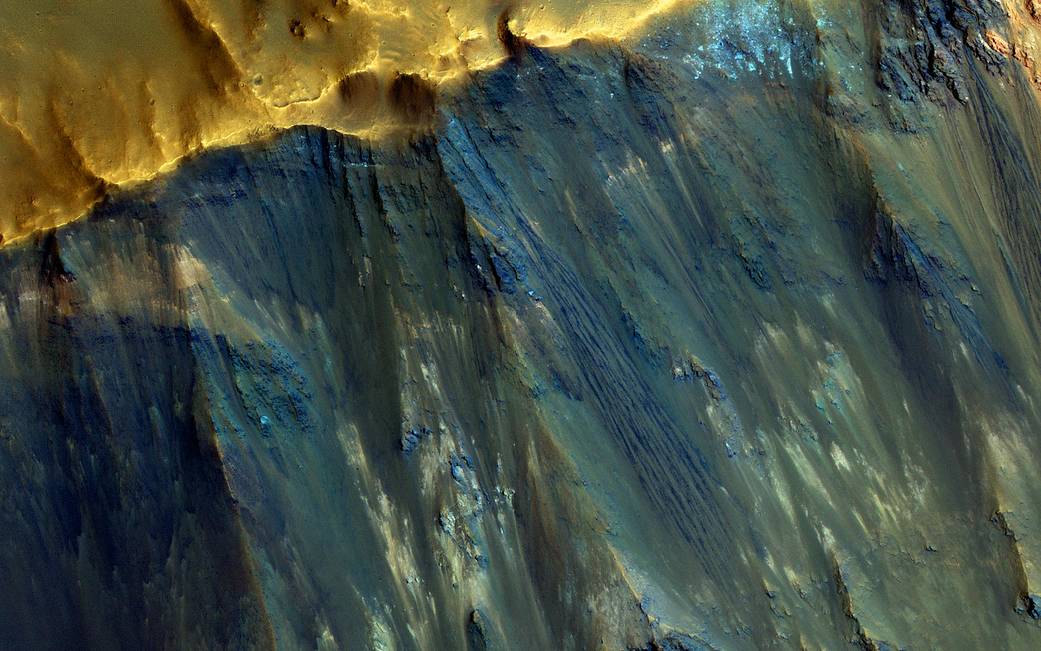
Impact craters expose the subsurface materials on the steep slopes of Mars. However, these slopes often experience rockfalls and debris avalanches that keep the surface clean of dust, revealing a variety of hues, like in this enhanced-color image from NASA’s Mars Reconnaissance Orbiter, representing different rock types. The bright reddish material at the top of the crater rim is from a coating of the Martian dust.
The long streamers of material are from downslope movements. Also revealed in this slope are a variety of bedrock textures, with a mix of layered and jumbled deposits. This sample is typical of the Martian highlands, with lava flows and water-lain materials depositing layers, then broken up and jumbled by many impact events.
This image was acquired by the High Resolution Imaging Science Experiment (HiRISE) camera on Feb. 28, 2011 at 15:24 local Mars time. It is a stereo pair with image ESP_021454_1550.
The University of Arizona, Tucson, operates HiRISE, which was built by Ball Aerospace & Technologies Corp., Boulder, Colo. NASA’s Jet Propulsion Laboratory, a division of Caltech in Pasadena, California, manages the Mars Reconnaissance Orbiter Project for NASA’s Science Mission Directorate, Washington.
Additional image products: HiRISE, University of Arizona
Image Credit: NASA/JPL/University of Arizona
Caption: Alfred McEwen


























